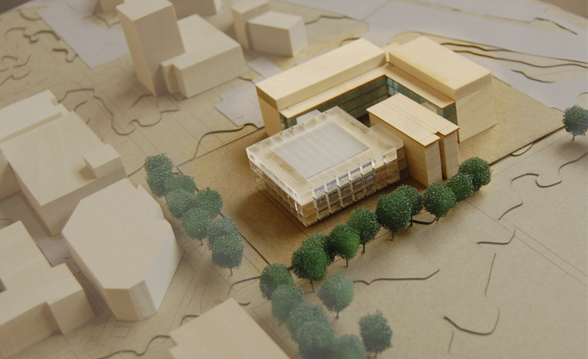Designs for the new Agriculture Building still in the works
The design for a new building which will house some departments in the College of Agriculture is currently under review by university and state officials.
The new building, which will be constructed on the east side of the Quad where the old library use to sit, will share the plot of land with another building owned by the U.S. Agricultural Research Service (ARS), which will be federally owned and operated, said Tom Peterson, building project manager for the College of Agriculture.
While the state of Utah has already approved funding for the new College of Agriculture building and is ready to move forward with plans, the federal government has yet to provide all the funding necessary for the ARS building, Peterson said.
“As soon as the federal government has the money in hand to begin construction of their building, construction for the Ag building will start as well,” he said.
No official date has been determined as to when the new buildings will begin construction; however, the design for each building will be chosen over the course of next year as research and programming take place, Peterson said.
“We’d like to start as soon as possible because the economy for construction is better right now than it’s been in years and prices could go up in future,” he said.
Peterson said a large amount of credit must be given to Sen. Bob Bennett, R-Utah, who worked closely with the Utah State University and the federal government in getting the ARS to put a new building on their list of projects.
The total cost of the project is estimated around $100 million, breaking down into 40 percent for the agriculture building and 60 percent for the ARS building, said Michael Kennedy, special assistant to the president for state and federal relations.
“Two sessions ago we were able to secure a General Obligation Bond from the state for $43.1 million,” Kennedy said. “With the help of Sen. Bennett, we’ve secured a little more than $10 million from the federal government,” and they’re in the process of securing the remaining $50 million.
Kennedy said the ARS and the federal government are both on board this project, but due to the many projects the ARS are needing to fund, the federal government is still trying to come up with the money.
The ARS is the main scientific agency in the U.S. Department of Agriculture, stated the organization’s Web site. The main job of the ARS is to discover solutions to agricultural problems which plague U.S. citizens through research and development.
“ARS conducts research to develop and transfer solutions to agricultural problems of high national priority and provide information access and dissemination,” the Web site stated.
Utah State University has decided to add a new Ag building because the current Agriculture Building is too old and does not have the technology necessary to train students in today’s day and age, Peterson said.
“The current Ag building is 50 years old. The labs are so antiquated that it’s kind of sad. We’re trying to train students for the 21st century in them, when it was designed so many years ago,” Peterson said.
The new agriculture building will have highly technologically-equipped classrooms, some laboratories, conference rooms, amenity spaces, an open access computer lab, faculty offices and potentially a café, Peterson said.
Peterson said this is also the university’s opportunity to put something new on the quad that represents the 21st century and also reminds the university of its roots.
While the new agriculture building will be open for students to use, the new ARS building will be restricted to personnel who are directly involved in federal research and will be card access only, Peterson said.
“The ARS building will have some College of Agriculture research and scientists, but it will be predominately federal agricultural research activity,” Peterson said.
The presence of an ARS building on USU’s campus will allow the university to collaborate with federal agriculture researchers, something that will enhance the College of Agriculture, and the university as a whole, Peterson said. The proximity of the researcher will also save both organizations money, something that is on the front of everyone’s mind right now, he said.
–greg.boyles@aggiemail.usu.edu

